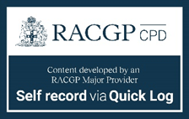How to manage musculoskeletal pain
Read more about the primary care management of musculoskeletal pain, including differential diagnosis and treatment options.
.jpg)
HealthCert Education
Pain is one of the most frequent causative factors for patients to present in primary care. Its inherent subjective nature poses a challenge for the patient to clearly articulate their pain to the physician. Musculoskeletal pain is thought to be a primary contributing factor for individuals of all ages.
Learn more about this topic in the HealthCert Professional Diploma program in Musculoskeletal & Sports Medicine - fully online or with optional practical workshops.
Musculoskeletal pain is prevalent worldwide and a major public health issue. According to WHO, 20-33% of individuals suffer from musculoskeletal pain, which makes approximately a quarter of individuals affected by musculoskeletal conditions. The Global Burden of Diseases (GBD) reported that a quarter of the musculoskeletal conditions have no defined pathological cause. It is non-specific and owing to limited functional mobility, sedentary lifestyle and emotional distress.
Musculoskeletal pain is an umbrella term that encompasses pain associated with several orthopaedic, systemic, inflammatory and psychological disorders affecting the musculoskeletal system. The diagnosis is based on the clinical pattern of the disease and the assessment of essential red flags to rule out serious pathology. The pain pattern is distinguished clinically on four key factors:
- Referred pain site
- Systemic condition
- Focal pathology
- Number of joints involved
Patients with musculoskeletal pain generally present with symptoms of acute/chronic pain, reduced joint ROM, decreased muscle strength, manual muscle test (MMT) grading less than 3, and muscle atrophy of the affected limb. Other classical symptoms include swelling, muscle twitching, inflammation, bruise/redness, fever and fatigue.
The musculoskeletal pain is broadly categorised as arthralgia and myalgia. Arthralgia is the pain that involves joints primarily, e.g. inflammatory conditions such as mono-arthritis, oligo arthritis, polyarthritis and flitting joint pain. Myalgia involves pain of muscles and soft tissue structures, e.g. Fibromyalgia, mechanical or non-mechanical pain, polymyositis, traumatic muscle pain and pain secondary to arthralgia.
Understanding the differential diagnosis of musculoskeletal pain
Musculoskeletal pain consists of different complex pain syndromes, which are local, psychological and neuropathic. It includes:
- Mechanical pain: aggravated by the movement of biomechanical structures, e.g. the spine. It is worse either in flexion-biased movement or extension-biased movement. The patient presents with shooting pain in relevant activity due to mechanical trapping of the nerve.
- Traumatic injury: the onset of pain is immediately at the time of injury but is aggravated by slight movement.
- Bone pain exhibits as deep, dull, boring and penetrating pain, localised in a specific limb or site (indication of tumour).
- Chronic pain syndrome: patient presenting with relapsing pain for more than 3 months along with arthralgia, myalgia and tenderness or typical tender points (Fibromyalgia).
- Soft tissue injuries occur due to overexertion, overstretching and repetitive or sudden trauma to tendons, ligaments, nerves and muscles (strain and sprain injuries).
GP management of musculoskeletal pain
Acute musculoskeletal pain can occur from injuries related to gym workout activities, weight lifting, sports injuries, improper body biomechanics and automobile accidents. Integration of the biopsychosocial model serves to treat chronic musculoskeletal pain.
The injury to the musculoskeletal system includes biological structures and affects patients' psychological, social and cognitive functions.
A musculoskeletal medicine specialist and sports medicine specialist treat the somatic musculoskeletal pain. The medication-based intervention is used to alleviate pain and simultaneously treat the root cause of pain origin. It comprises corticosteroids, analgesics, and NSAIDs administered as (oral, topical, and injection,) medications.
Physical therapy is an essential part of musculoskeletal pain management. The medications help to minimise pain and treat the systemic/inflammatory pathology. Physical therapy helps in regaining strength, mobilising joints, regaining normal function, treating the biomechanical cause of pain and increasing the range of motion.
Musculoskeletal pain arises due to disruption or injury to the structure of the musculoskeletal system (joints, muscles, ligaments, nerves, tendons) that support the limbs, torso, back and neck. The insidious onset of chronic musculoskeletal pain causes hindrance in the daily activities of patients due to weakness, fatigue, and pathology disorders. Referral to a specialist and physical therapist can help in relieving pain and treating the disorder.
Dr Humda, Physiotherapist
Learn more about this topic in the HealthCert Professional Diploma program in Musculoskeletal & Sports Medicine - fully online or with optional practical workshops.
Engaging with this blog can help meet your annual
|
|
|
- https://www.who.int/news-room/fact-sheets/detail/musculoskeletal-conditions
- https://scholar.google.com/scholar_lookup?journal=PLoS+ONE&title=Effective+treatment+options+for+musculoskeletal+pain+in+primary+care:+a+systematic+overview+of+current+evidence&author=OO+Babatunde&author=JL+Jordan&author=DA+Windt&volume=12&publication_year=2017&pages=e0178621&pmid=28640822&
- https://ajph.aphapublications.org/doi/full/10.2105/AJPH.2018.304747
- https://scholar.google.com/scholar_lookup?journal=Br+J+Sports+Med&title=What+does+best+practice+care+for+musculoskeletal+pain+look+like?+Eleven+consistent+recommendations+from+high-quality+clinical+practice+guidelines:+systematic+review&author=I+Lin&author=L+Wiles&author=R+Waller&author=R+Goucke&author=Y+Nagree&volume=54&publication_year=2020&pages=79-86&pmid=30826805&
- https://www.ncbi.nlm.nih.gov/pmc/articles/PMC8119532/#CR2
- https://scholar.google.com/scholar_lookup?journal=Ann+Rheum+Dis&title=The+global+burden+of+other+musculoskeletal+disorders:+estimates+from+the+Global+Burden+of+Disease+2010+study&author=E+Smith&author=DG+Hoy&author=M+Cross&volume=73&publication_year=2014&pages=1462-1469&pmid=24590181&
- https://www.sciencedirect.com/science/article/pii/S2590109523000058

 1800 867 1390
1800 867 1390

.jpg)
.jpg)



